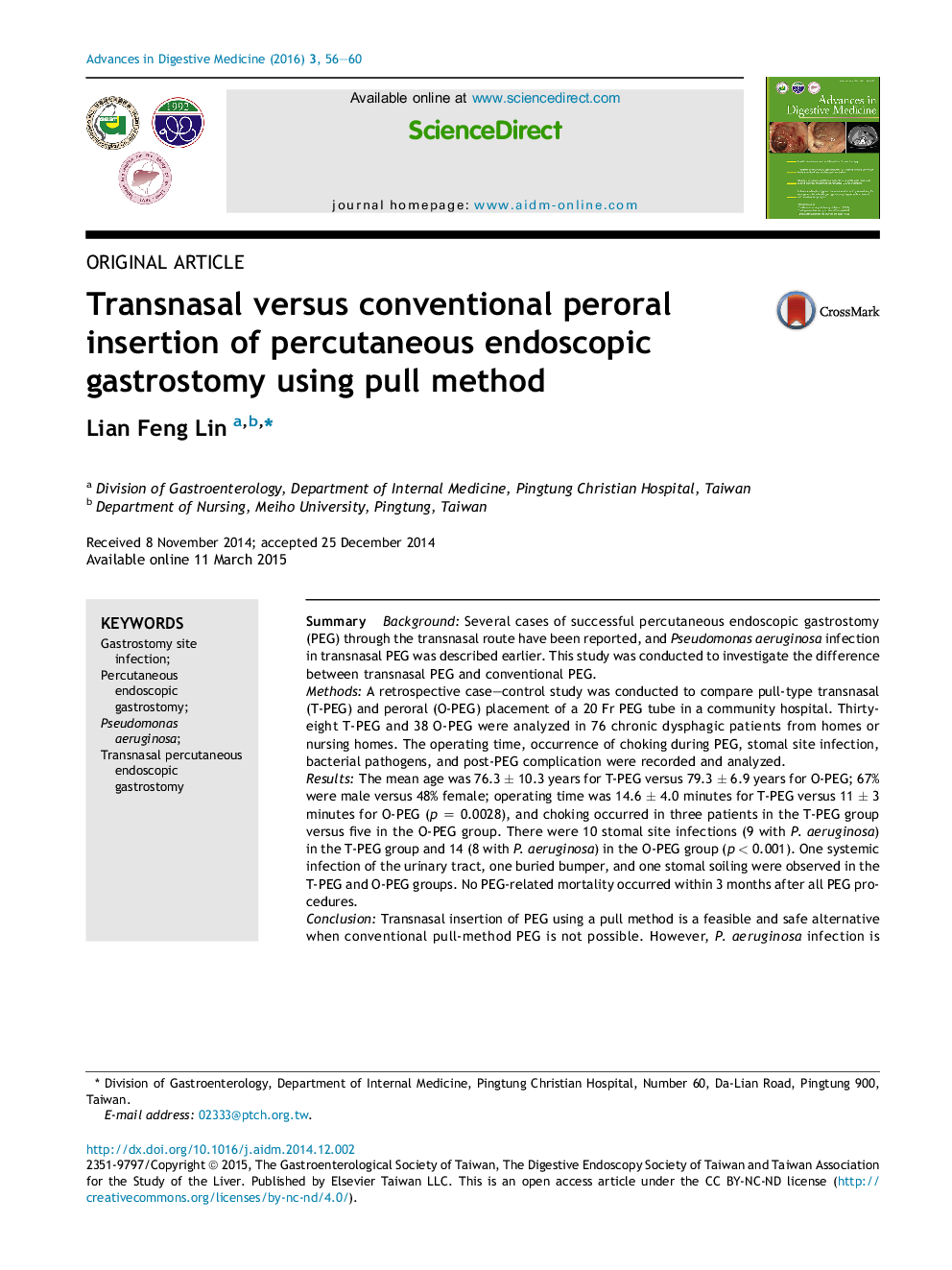| Article ID | Journal | Published Year | Pages | File Type |
|---|---|---|---|---|
| 3278514 | Advances in Digestive Medicine | 2016 | 5 Pages |
SummaryBackgroundSeveral cases of successful percutaneous endoscopic gastrostomy (PEG) through the transnasal route have been reported, and Pseudomonas aeruginosa infection in transnasal PEG was described earlier. This study was conducted to investigate the difference between transnasal PEG and conventional PEG.MethodsA retrospective case–control study was conducted to compare pull-type transnasal (T-PEG) and peroral (O-PEG) placement of a 20 Fr PEG tube in a community hospital. Thirty-eight T-PEG and 38 O-PEG were analyzed in 76 chronic dysphagic patients from homes or nursing homes. The operating time, occurrence of choking during PEG, stomal site infection, bacterial pathogens, and post-PEG complication were recorded and analyzed.ResultsThe mean age was 76.3 ± 10.3 years for T-PEG versus 79.3 ± 6.9 years for O-PEG; 67% were male versus 48% female; operating time was 14.6 ± 4.0 minutes for T-PEG versus 11 ± 3 minutes for O-PEG (p = 0.0028), and choking occurred in three patients in the T-PEG group versus five in the O-PEG group. There were 10 stomal site infections (9 with P. aeruginosa) in the T-PEG group and 14 (8 with P. aeruginosa) in the O-PEG group (p < 0.001). One systemic infection of the urinary tract, one buried bumper, and one stomal soiling were observed in the T-PEG and O-PEG groups. No PEG-related mortality occurred within 3 months after all PEG procedures.ConclusionTransnasal insertion of PEG using a pull method is a feasible and safe alternative when conventional pull-method PEG is not possible. However, P. aeruginosa infection is common when using T-PEG; therefore, more studies focusing on prophylaxis of T-PEG-associated P. aeruginosa infection are required.
